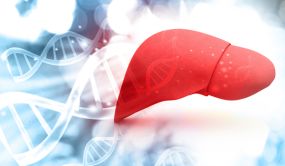What Causes Fatty Liver Disease? Recognize NAFLD Symptoms and Liver Disease Signs Early
Fatty liver disease is a condition in which excess fat builds up inside liver cells, gradually affecting how well the liver functions. While small amounts of fat are standard, too much can lead to inflammation, scarring, and long-term damage. One of the most concerning aspects of fatty liver disease—especially the non-alcoholic type—is that it often develops silently. Many people show no symptoms for years, making early detection crucial.
Recognizing fatty liver symptoms and understanding the health risks associated with NAFLD (Non-Alcoholic Fatty Liver Disease) can help individuals take action before severe liver damage occurs. Learning the early signs of liver disease empowers patients to seek medical care and make lifestyle changes that can prevent progression.
Common Causes and Risk Factors of Non-Alcoholic Fatty Liver Disease (NAFLD)
NAFLD is now one of the most common liver conditions worldwide, affecting millions of adults and even children. Unlike alcoholic fatty liver disease, NAFLD occurs in people who drink little to no alcohol. Instead, it is closely linked to metabolic health and lifestyle factors.
Obesity and Insulin Resistance
Obesity—particularly excess fat around the abdomen—is a major driver of NAFLD. According to the National Institute of Diabetes and Digestive and Kidney Diseases, NAFLD is strongly associated with insulin resistance, a condition in which the body cannot effectively use insulin, leading to fat accumulation in the liver.
Metabolic Health Problems
Several metabolic disorders significantly raise the risk of NAFLD:
- Type 2 diabetes
- High cholesterol
- High triglycerides
- Metabolic syndrome
These conditions place additional strain on the liver and promote fat buildup.
Genetic Factors
Family history also plays a role. Some individuals are genetically predisposed to developing fatty liver disease. Certain populations, including people of Hispanic descent, have a higher genetic risk.
Lifestyle Influences
Diet and physical activity are major factors. Eating large amounts of processed foods, added sugars, fried foods, and foods high in saturated fat can contribute to liver fat accumulation. A sedentary lifestyle further increases risk.
Understanding these NAFLD risk factors is essential because early lifestyle changes can often slow or reverse disease progression.
Recognizing Signs and Symptoms of Fatty Liver Disease
One of the most challenging aspects of fatty liver disease is that symptoms are often subtle—or completely absent—in the early stages. For many people, NAFLD is discovered incidentally during routine bloodwork or imaging tests done for other reasons.
Early Fatty Liver Symptoms
Some individuals experience mild, nonspecific symptoms, including:
- Fatigue or low energy
- Mild discomfort or fullness in the upper right abdomen
- Unexplained weakness
- Elevated liver enzymes (found during blood tests)
These signs can be easy to overlook, which is why routine checkups are important for individuals at higher risk.
Progressive Liver Disease Signs
As NAFLD advances to more serious stages—such as non-alcoholic steatohepatitis (NASH) or cirrhosis—symptoms become more noticeable and concerning. These may include:
- Yellowing of the skin and eyes (jaundice)
- Swelling in the legs or abdomen
- Easy bruising
- Dark urine and pale stools
- Confusion or difficulty concentrating
According to the Cleveland Clinic, many individuals remain asymptomatic until liver damage becomes significant, highlighting the need for early screening when risk factors are present.
Why Symptoms Often Go Unnoticed
The liver is resilient and can function normally even when damaged. This makes regular health monitoring essential, particularly for those with obesity, diabetes, or metabolic syndrome, who may not feel symptoms until the disease has progressed. Recognizing fatty liver symptoms early enables faster intervention and better outcomes.
Prevention and Management Tips to Protect Your Liver Health
Fatty liver disease can often be slowed, stabilized, or even reversed with consistent lifestyle improvements. These strategies help reduce liver fat levels and support overall metabolic health.
1. Maintain a Healthy Weight
Weight loss is one of the most effective ways to reduce liver fat. Even a 5%–10% reduction in body weight can significantly improve liver function. According to the Centers for Disease Control and Prevention, lifestyle changes that promote gradual, sustainable weight loss are the most effective for long-term health.
2. Improve Your Diet
Diet plays a central role in managing NAFLD. Doctors commonly recommend:
- Reducing added sugars, such as sugary drinks and desserts
- Limiting saturated fats and fried foods
- Increasing fruits, vegetables, whole grains, and lean proteins
- Lowering intake of processed foods
- Choosing healthy fats, such as those from olive oil, nuts, and fish
A diet rich in antioxidants and fiber supports liver repair and reduces inflammation.
3. Exercise Regularly
Aim for at least 150 minutes of moderate exercise per week. Physical activity helps reduce liver fat even without significant weight loss by improving insulin sensitivity and metabolic function.
4. Manage Underlying Health Conditions
Controlling diabetes, high blood pressure, and cholesterol helps prevent NAFLD from progressing. Medical monitoring is essential for individuals with multiple risk factors.
5. Avoid Alcohol and Unnecessary Medications
While NAFLD occurs in non-drinkers, alcohol still stresses the liver. Limiting alcohol intake further protects liver health. Only take medications as prescribed, since certain drugs can worsen liver function.
Routine checkups and blood tests are essential for monitoring liver disease signs, especially for those with metabolic conditions or a family history of liver issues.
Conclusion
Fatty liver disease often develops quietly, but recognizing early fatty liver symptoms, understanding the risks associated with NAFLD, and watching for liver disease signs can make a life-changing difference. By maintaining a healthy lifestyle, managing metabolic conditions, and seeking regular medical care, individuals can protect their liver and prevent long-term complications. Proactive steps—starting today—can significantly improve liver health and reduce the risk of progression to severe disease.
Frequently Asked Questions
1. Can fatty liver disease be reversed?
Yes, especially in the early stages. Weight loss, diet improvement, and liver-friendly habits can reduce liver fat and inflammation.
2. What lifestyle changes are most effective for NAFLD?
Regular exercise, healthy eating, and maintaining a healthy weight are the top recommendations. Managing diabetes and cholesterol is also important.
3. Are there medications to treat fatty liver?
There are no FDA-approved medications specifically for NAFLD yet, but doctors may prescribe treatments for related conditions like diabetes and high cholesterol.
4. How is fatty liver diagnosed?
Diagnosis may involve blood tests, ultrasounds, CT scans, and sometimes liver biopsy to assess inflammation and damage.




























